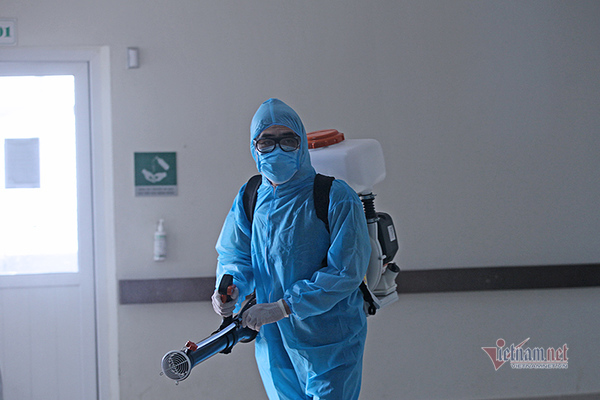Mr. Tai is 64 years old, after recovering from Covid-19, his feet often hurt, thinking because of joint pain, he should use massage oil every day, then his feet swell, turn purple, and ulcerate.
Doctor, Doctor Nguyen Anh Dung, Head of Cardiothoracic – Thoracic Surgery Department, Cardiovascular Center, Tam Anh General Hospital in Ho Chi Minh City, said that the patient had a blood vessel blockage in the lower extremities, and his feet were necrotic. Doctors used anticoagulants, surgically removed blood clots causing occlusion of the lower extremities, opened the blood vessels by bridging techniques, used negative pressure machines to suck blood, and removed the necrotic muscle.
Image: Patient’s necrotic foot (readers consider when viewing)
According to Dr. Dung, this patient was in the most severe stage, fortunately he was saved in time, so he kept his foot. If it is delayed, the lower limb is severely necrotic, the doctor is forced to choose the option of amputation to preserve the patient’s life. “We have met many cases of amputation due to vascular occlusion because the patient did not know, by the time the doctor intervened, it was too late,” the doctor said.
Vascular occlusion of the lower extremities is a state of ischemia in part or all of the lower extremities, causing pain, ulceration, and even limb necrosis. The disease has many causes, including the impact from the formation of blood clots that block blood vessels. In particular, people infected with Covid-19 have an increased risk of developing serious blood clots 3 to 6 months after contracting the disease.
The doctor explained, after entering the body, nCoV will attach to the ACE2 receptor that is abundant in the vascular endothelium and enter cells. This causes damage in the blood vessels, leading to the body triggering the release of cytokines, white blood cells… to actively heal the damage. However, it is the immune system overreacting to pathogens that contributes to the formation of blood clots. Not only damaging the brain, heart, lungs, kidneys, blood clots can also restrict blood flow to other organs such as clogging the arteries of the lower extremities leading to necrosis requiring amputation if not timely intervention. .
A study published in April by Swedish, British and Finnish scientists, comparing 4 million people who did not have the disease and more than one million people who had been infected with Covid-19, found that after three months of positive With nCoV, infected people have a 4% increased risk of developing deep vein thrombosis in the thighs or legs.
A recent study on British Medical Journal (BMJ) also noted that nCoV can increase the risk of deep vein thrombosis by 5 times.
In order to actively monitor signs of blood clot formation and prevent the risk of vascular occlusion in the lower extremities after Covid-19, Dr. Dung recommends that people with underlying medical conditions such as hypertension, diabetes, heart lipid metabolism… it is necessary to go to medical facilities with specialized cardiology for examination, early detection and timely intervention.
The way to determine the location and extent of the limb vascular occlusion is ultrasound or angiography on DSA, tomography. In addition, the doctor can check the pulse in the creases of the instep, the knee of the patient to detect blood vessel occlusion early, treat it early, and prevent dangerous complications.

Patients are screened for cardiovascular – vascular disease after Covid-19 by 768-slice CT system at Tam Anh General Hospital. Image: Hospital provides
Gia Hung
at Blogtuan.info – Source: vnexpress.net – Read the original article here



